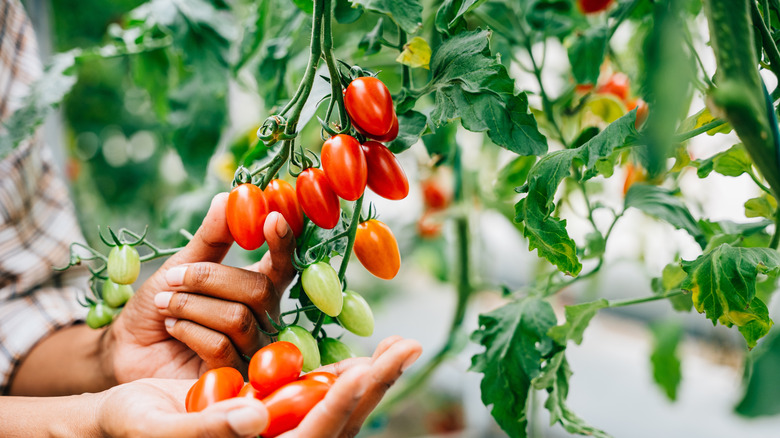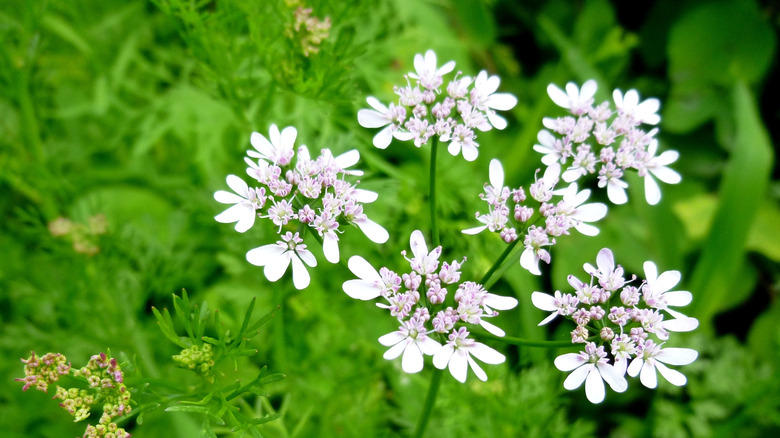The Companion Herb That'll Keep Your Growing Tomato Plants Happy And Healthy
The thrill of planning each season's garden is almost as exciting as harvesting your first veggies. Lots of variables go into how you map out and space your garden veggie plants. That's where companion planting comes in. Placing certain plants together benefits both of them, often reducing pest issues or improving growth in some way. Tomatoes (Solanum lycopersicum) are a common addition to veggie gardens in all climates. If they're among the list of plants in your garden, save room next to them for cilantro (Coriandrum sativum), which grows in USDA zones 2 to 11. Not only does the tasty herb add fresh flavor to your homemade salsa, but it also attracts beneficial insects that can fight off hornworms, which often target tomatoes. Plus, that strong smell that makes cilantro easy to recognize also masks the smell of the tomato plants for even more protection.
The tomato isn't the only plant that benefits from the relationship. As a cool-season herb, cilantro thrives in the spring and early summer months with temperatures from 50 to 85 degrees Fahrenheit. Meanwhile, tomato plants are growing like crazy all summer long — they're usually ready to harvest later in the summer, with August being a common tomato harvesting month. The tall tomato plants can shield cilantro plants from the heat to make them last a little longer before they bolt.
Why cilantro and tomatoes work well together
When looking at companion planting and how it benefits your garden, it's important to look at the growing conditions of the individual plants. Tomatoes and cilantro might not seem like a good match since their prime seasons are different — cilantro is best in cooler temperatures while tomatoes are ready later in the season. But that's part of what makes the planting relationship work well.
Hotter weather causes cilantro to bolt, which means it starts to grow small flowers and produce seeds. The cilantro leaves take on a bitter taste at that point, so the herb isn't as good for consuming once this process starts. However, it becomes more beneficial for the tomato plants when those flowers start to grow because they attract all sorts of good bugs that'll chase pests from your garden and keep your tomatoes healthier. The flowers attract parasitic wasps, which will target the hornworms that could destroy your tomatoes.
Throughout the growing season, cilantro offers an aromatic quality that makes it a good planting partner. The cilantro scent helps mask the smell of other plant, which makes it more difficult for pests to find it since they use their sense of smell to find the plants they love. Cilantro's fragrant leaves protect tomatoes from whiteflies, which suck the sap from tomato plants, stunting their growth and causing lower production. The scent also repels other potential tomato-damaging pests like aphids, potato beetles, and spider mites, allowing your tomatoes to thrive.

